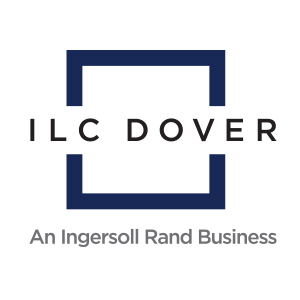Contract packagers and manufacturers in the chemical, personal care, dairy, and food & beverage industries leverage intermediate bulk packaging to optimize production and facilitate shipping of their liquid products. But how do they know which packaging solution to choose for their applications?
In this blog, we explore why you should consider intermediate bulk packaging for liquids, criteria for selecting the right bulk liquid liner, the types of liquid liners available, and residual waste considerations.
Why Use Intermediate Bulk for Liquids
A collapsible intermediate bulk container (IBC) paired with a disposable bulk liquid liner is a cost-effective alternative to drums, botte-in-cage, and other types of bulk shipping alternatives. The liner protects the product from cross contamination and allows the outer container to be reused instantly, eliminating the need for costly cleaning operations.
In-house intermediate bulk handling is common in personal care and food & beverage operations. After preparing a large batch in stainless-steel vessels, producers use rigid collapsible IBCs with liners to “tote off” the batch into smaller quantities of 315 – 330 gallons. The IBCs are delivered from compounding to the packaging line for primary package filling.
Another common use for IBCs with liners is in shipping liquid products such as liquid eggs, creams, and sauces from the original food ingredient producers to food manufacturers and contract packagers. IBCs with liners provide for freight optimization and handling efficiencies of liquids vs drums because a greater quantity of liquid can be shipped per pallet as well as easier handling of a singular IBC versus five drums.
Types of Liquid Bulk Applications
- Pharmaceutical: Nutraceuticals and CBD oils
- Food & Beverage: Syrups, sauces, oils, dressings, condiments, juices, and concentrates
- Dairy: Fluid milk, cream, liquid eggs, and yogurt
- Personal Care: Lotions, gels, shampoos, and liquid soap
- Chemical: Adhesives, inks, and pigments
Criteria for Selecting the Right Bulk Liquid Liner
- Type of IBC Container
The first question your liner supplier will likely ask you is, “What intermediate bulk container (IBC) are you using?” This is one of the most important drivers for liner selection because bulk liquid liners are designed to fit specific IBCs.
The leading IBC producers have slight nuances in the design of their totes. The dimensions of the IBC, location of the discharge port, and gallon capacity can vary from tote to tote.
To help maximize the capacity of the IBC and to aid in complete filling and dispensing, bulk liquid liners are designed to work with the specific dimensions of the tote. Pillow liners are designed for the height of the tote, whereas form fit liners are designed as a cube to meet the exact dimensions of the tote and fill into the corners of the tote.
Some liners are supplied with gland adaptors for IBC containers where needed to safely secure the discharge fitment into the bottom discharge port of the IBC.
- Specific End-Use Application Needs
The second question your liner supplier is likely to ask is, “What is going in the liner?” Understanding the needs of your specific product application is critical in selecting the correct liner. Product compatibility with the liner is an important concern as well as filling and storage conditions.
Depending on your end use application, you may require that your liner supplier’s facility carry key certifications such as FSSC22000, IMS, Kosher or Halal certifications.
- Filling and Dispensing Considerations
It is also important to understand the filling and dispensing process in selecting the correct liner. Will the product be filled from the top or bottom of the IBC? What size valve will be needed? Will automatic filling equipment be used? As liners are made of flexible plastic films, they have a maximum fill temperature. Higher temp liner material options are available if your application has a higher fill temperature.
- Residual Reduction
Is leftover product residual after dispensing your bulk liquid liners an issue for you? Different liquid liner styles can assist with reducing the amount of residual left behind in your liner.
- Other Considerations of Liquid Bulk Liners
The majority of liquid liners are produced using linear low-density polyethylene (LLDPE) film that is FDA approved (21 CFR 177.1520). Your liner manufacturer should be able to provide a technical specification sheet for the specific film used in your liquid liner. For oxygen sensitive applications, barrier films can also be used in the construction of the liner. Important film specifications:
- Gauge
- Maximum fill temperature
- Tear strength
- Oxygen transmission rate
Thickness of the film or gauge used in bulk liners contributes to the strength of liner, puncture resistance and barrier properties. Common liquid liners are produced in 3.2 mil and 4.0 mil thickness. Liquid liners are typically produced with multiple plies of film, typically supplied in either 2 ply or 3 ply formats. Some inexpensive open top liners can be obtained in a single ply format.
Liquid liners are packed in multiples per box. The number of liners per box will vary based on liner size and whether a cassette is included with the liner. Your liner supplier will have a specific minimum order quantity (MOQ). To optimize freight, full pallet quantities are preferable.
Bulk liquid liners are folded specifically after manufacturing for top dispense or bottom dispense so that they are easy to insert into your IBC with little manipulation to receive the proper filling and discharging efficiency.
Liquid liners can also be supplied with a cardboard cassette. The cassette helps with proper positioning of the liner in the IBC/tote to help ensure the proper fill of the liner. The liner is supplied with the cassette inserted and the liner is folded around it. The cassette should only be removed from the top of the liner after it is fully filled. The cassette is made of cardboard that can be recycled. Cassettes are designed for specific totes and liner configurations.
Types of Liquid Bulk Liners
- Open Top Liners
Open top liners are the simplest type of bulk liquid liner. The liner is designed to be taller than the IBC so that the extra film at the top can be folded over the sides of the IBC and can be sealed or tied off after filling. These liners do not have a fill fitment, so they require extra care when filling and dispensing.
- Liquid Pillow Liner
Liquid pillow liners are an economical packaging choice for liquid bulk materials in IBCs. The pillow style IBC liner protects liquid products from contamination and leakage during processing, storage, and transportation. When filled, these liners form the shape of a pillow. Pillow liners have a fill valve, so they are more efficient to fill and dispense than open top liners. Pillow liners are less efficient for complete fill and discharge than form fit liquid liner types especially for more viscous liquids.
- Form Fit Liquid Liners
Form fit liquid liners are designed to reduce labor while minimizing waste and product residual during filling and dispensing bulk liquids. The form fit liner is designed to closely match the interior dimensions of the IBC without creating any folds, creases or gussets to trap material during filling or dispense. They provide more efficient filling of the liner in the IBC than a pillow liner.
- Assisted Dispense Liners
For viscous liquids, left over residual in the liner creates inefficiency and wasted profit. Millions of dollars are lost annually due to scrapped product that cannot be extracted from disposable form fit liners. On average, companies leave between 10 – 40 kg of viscous liquid product residual behind in bulk liners during dispensing operations.
To deal with reducing product waste in bulk liners, some manufacturers use manual manipulation to squeeze residual from the liner or other unsafe methods such as tilting the tote with a fork lift or suspending the liner from the ceiling or less efficient manual wringing systems. To address the challenge with residual reduction, liner suppliers have developed more efficient assisted dispense liners.
Air-assist liners are one type of assisted dispense liner that use plant air to inflate specially designed bladders in the liner that fill out the corners as the liner dispenses. The air bladders can be unwieldy to pop at the end of the dispense.
- The Xtrakt® System from ILC Dover is an improvement over air-assist liners, reducing a greater amount of residual left behind, on average leaving less than 2 kg of residual product in the liner. Xtrakt® uses ILC Dover-designed dual-wall liners that work in conjunction with a pneumatic controlled drive unit system to extract the maximum amount of product. It is compatible with “top fill”/bottom discharge operation and with rigid IBC totes.
For more information or assistance selecting the right intermediate bulk liner for your application, contact ILC Dover.

